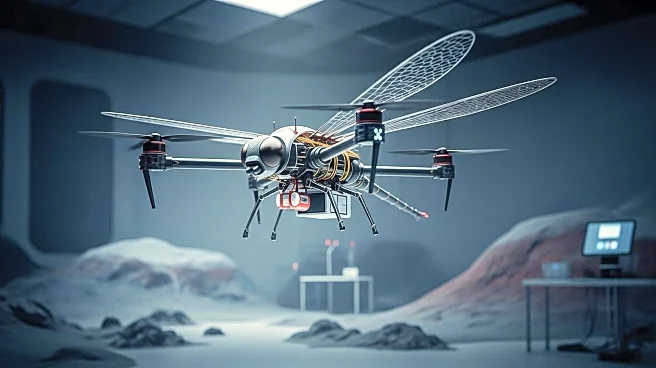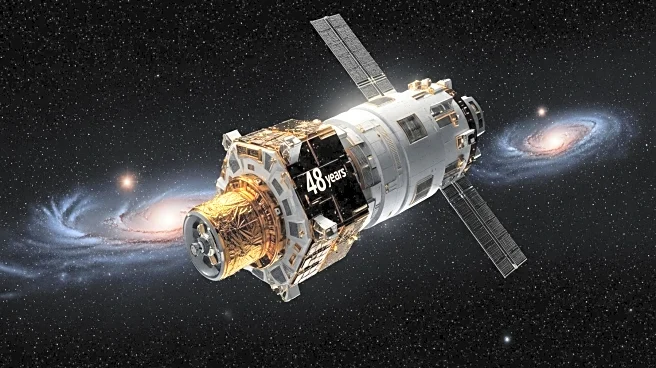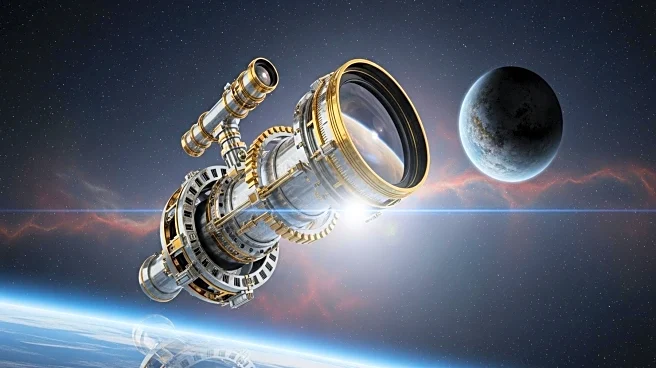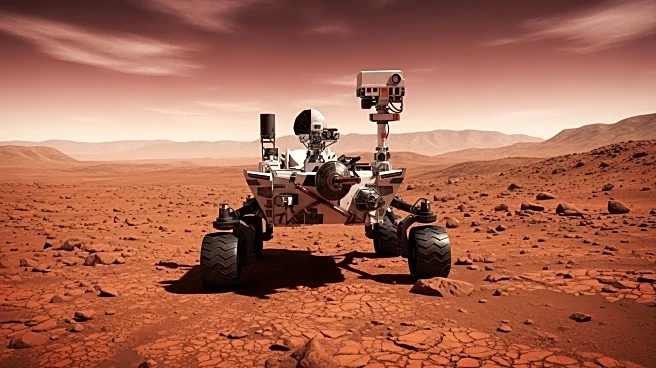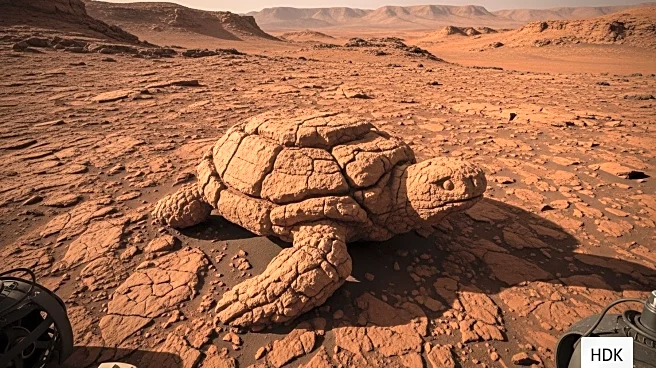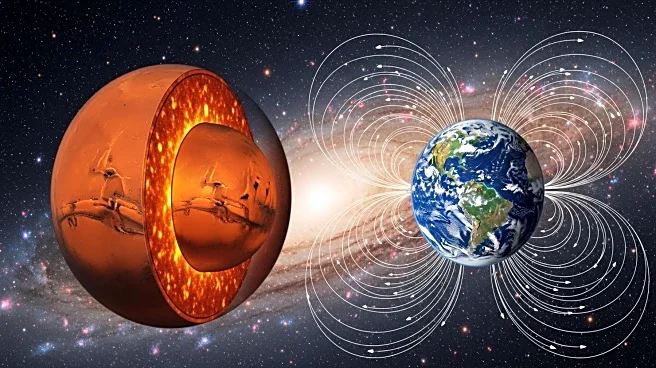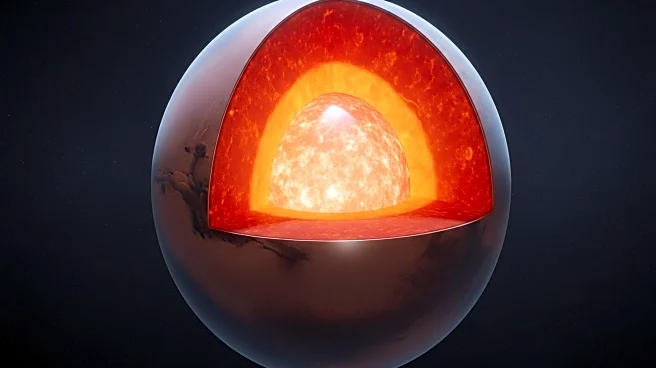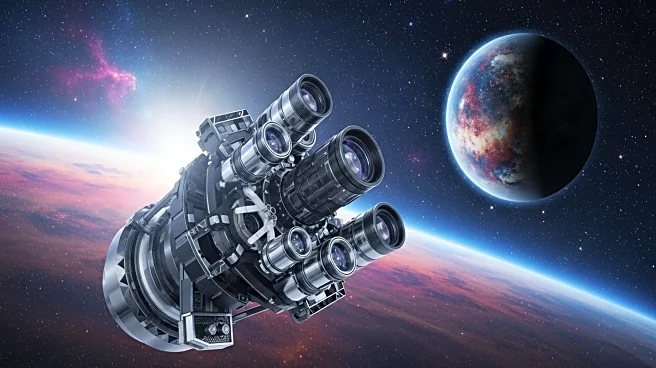What's Happening?
NASA's Dragonfly mission, aimed at exploring Saturn's moon Titan, has achieved significant progress in its development and testing phases. The mission, scheduled for launch in July 2028, involves a car-sized, nuclear-powered rotorcraft designed to investigate Titan's surface over a three-year period. Recent advancements include aerodynamic analyses of the rotorcraft's rotors and durability trials of its foam insulation. The Ion Trap Mass Spectrometer, a crucial component for analyzing Titan's chemical processes, has passed its acceptance review. Additionally, the flight radios for communication during the mission have been completed, and structural testing of the aeroshell heat shield has been conducted to ensure safe entry into Titan's atmosphere.
Why It's Important?
The Dragonfly mission represents a significant step in understanding the habitability and potential for life on Titan, one of the most intriguing celestial bodies in our solar system. By exploring multiple landing sites, the mission aims to gather data that could provide insights into the building blocks of life. The successful development and testing of mission components are crucial for ensuring the rotorcraft's performance in Titan's harsh conditions. This mission not only advances scientific knowledge but also demonstrates NASA's capability to conduct complex interplanetary missions, potentially paving the way for future explorations of other moons and planets.
What's Next?
The Dragonfly mission is set to enter its integration and test phase in January 2026, with continued development of its scientific payload and flight systems. As the launch date approaches, NASA will focus on finalizing the rotorcraft's design and ensuring all components are ready for the journey to Titan. The mission's success could influence future NASA projects and collaborations with international space agencies, as well as inspire advancements in aerospace technology and exploration strategies.
